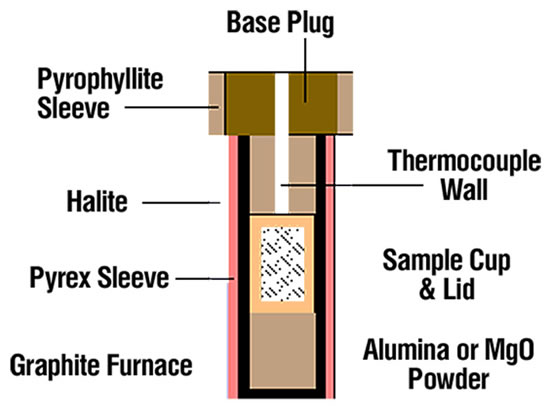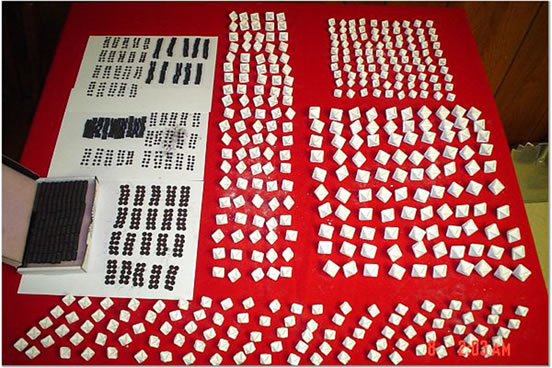Sample Assemblies & Expendables

One of the most common sampleconfigurations employed in piston-cylinder work is shown in the schematiccross-section. A halite or BaCO3 cell, pyrex sleeve, graphite furnace andsample container are arranged in a nested cylindrical arrangement. Crushablealumina or MgO is packed into the space surrounding the sample capsule and theassembly is capped by a steel base plug and pyrophyllite sleeve. The plug makeselectrical contact to the graphite furnace and top plate of the stack, which iselectrically isolated. The remaining contact to the furnace element is madethrough the press frame via the piston, pressure vessel and lower stackcomponents. Sample temperature is measured by means of a thermocouple which isplaced in a hole through the base plug and ceramic filler
The sample crucible is usually a cup cutfrom hollow alumina or magnesia tubing. Sealed gold or platinum capsules areused if potential reactions with ceramic crucibles are a concern. Severalhundred milligrams of Example of sample assemblies and expendablesmaterial canbe reacted in the apparatus using a 3/4" diameter assembly and sample cupof the scale shown above. A deeper sample cup can be used, but care must beexercised to ensure that the length of the specimen is not subjected to asubstantial temperature gradient. Special tapered graphite heaters whichminimize the axial gradient are available from Rockland Research, in additionto the standard variety, which are supplied with our sample assemblies.

The materials chosen to fabricate sampleassemblies and crucibles for experiments depend on the demands of theinvestigation, and there is considerable room for individual innovation. Ifrequired, an oxygen atmosphere can be created by mixing an oxidizer such asKClO3 with the reactants, or it can be separated from the reactants with aceramic or noble metal partition. Reducing environments can be achieved byusing the proper metal/metal oxide buffer in the reaction mixture.








